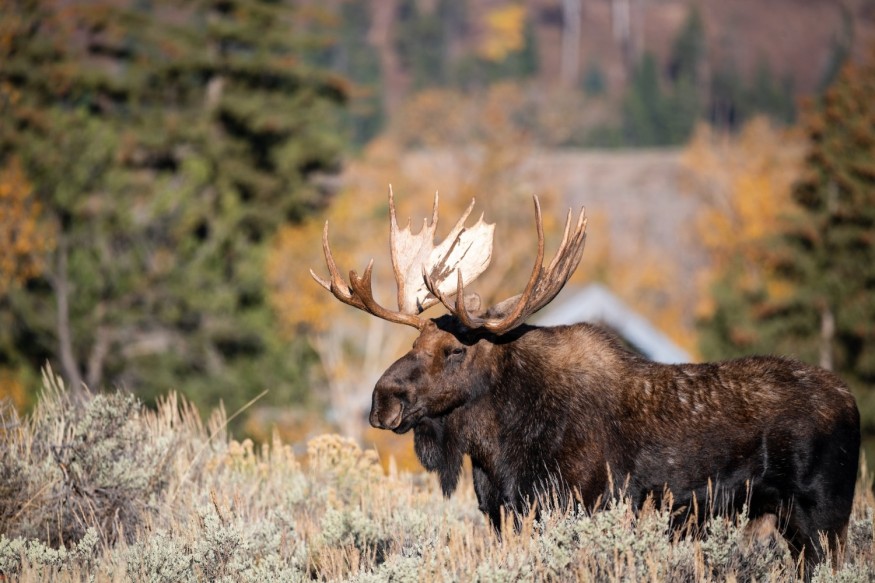
According to biologists, with a rise in grey wolves and a drop in moose herds, wildlife populations inside the limits of Isle Royal National Park are on the right track.
Isle Royale National Park Wildlife: Grey Wolves and Moose
Five years after officials launched a last-ditch effort to save the species from extinction on the chain of Lake Superior islands, scientists reported that gray wolves are flourishing in Isle Royale National Park.
The moose population in the park, meanwhile, continues a rapid but necessary fall. Since balsam fir trees, which were the lumbering creatures' main source of food during the lengthy, snow-covered winters, were in short supply, overpopulation was leading to their own famine, Michigan Technological University biologists said.
The researchers said that the patterns appeared to support the federal government's choice to fly mainland wolves to Isle Royale in 2018. They argued that the predators' reintroduction is assisting in rebalancing an ecosystem that was thrown off-kilter when their population plummeted to just two.
Annual Report
According to the scientists' yearly report, which was mostly based on aerial observations made last winter, the rebuilt pack now numbers 31 wolves, up from 28 the previous year. According to the report, three packs of wolves looked to be developing, with the remaining animals alone or in smaller packs. There were around 967 moose, down from 1,346 the year before and a 54% decrease from 2,000 in 2019. Ecologists are happy about a herd that they believe will be healthier.
According to animal biologist and co-leader of the aid study Sarah Hoy, it has been a resounding success.
The issue over whether people should save endangered species at Isle Royale or other wilderness areas, where federal law mandates letting nature take its course, hasn't been resolved by the preliminary findings, though.
The advocacy organization Wilderness Watch's conservation director, Kevin Proescholdt, stated that they have thought and continue to feel that the National Park Service shouldn't have intervened and established this artificial population of wolves.
Also Read : Carnivorous Howling Werewolf Mouse Among 7 Elusive Species Found in Kansas on Wildlife Survey
Wolf-and-Moose Dynamics
Around the start of the 20th century, according to scientists, the first moose on the island swam to Isle Royale. Crossing the frozen lake's surface from Minnesota or the Canadian state of Ontario, wolves first appeared in the late 1940s, according to a study in the National Park Service Scientific Monograph Series. Despite being geographically a part of Michigan, this state's coastline is further away.
Wolves had access to plenty of moose meat, which helped control the population of moose. The numbers of both species fluctuated throughout time in response to weather, sickness, parasites, and other causes. But between 2011 and 2018, the wolf population fell precipitously due to inbreeding.
The two species should be allowed to die out, according to some researchers, much as other species that formerly lived on the island have done, including the Canada lynx along with woodland caribou, which shared a predator-prey dynamic with modern wolves and moose.
The lack of a top-of-the-food-chain predator of moose and beavers, according to park authorities and scientists from Michigan Tech, would have been disastrous for the island's forest. According to the research, the balsam fir trees are still deteriorating due to moose grazing and an infestation of the tree-killing spruce budworm, AP News reports.
The report was accomplished by Hoy, alongside several colleagues, and published by Wolves and Moose of Isle Royale.
Related Article : Most Terrifying Apex Predators in the World That Dominate the Food Chain
© 2025 NatureWorldNews.com All rights reserved. Do not reproduce without permission.

